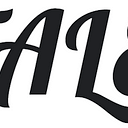TALE: A Possible Theme called “The Hierarchy of Fit”
Behavior, Product, Market, Business, Society, and Beyond
The above picture represents a Possible Theme called “The Hierarchy of Fit”.
- Name: The Hierarchy of Fit
- Clue: Behavior, Product, Market, Business, Society, and Beyond
- Type: knowledge theme
- Contributor: Robert Meza
- Reference: Michael Poter: What Is Strategy? (1996)
The theme of “The Hierarchy of Fit” was inspired by Robert Meza’s post about Behavior-fit on Linkedin.
According to Robert Meza, “Product-Market fit is not just about the product and the market, it’s also about the customer and the behavior as well. ”
We all know product-market fit is a crucial aspect of building a successful product.
However, it’s not enough to just focus on the fit between the product and the market; it’s important to also consider the fit between the product and the customer’s behavior.
Think of it, when your customer uses your product, they have to change something related to their behavior or the environment — that’s a big ask.
But, it’s possible to help your customers make the choices they wanted to make in the first place, when they chose to try your product by understanding the psychological factors that drive their actions.
The diagram below is Robert Meza’s new framework about Behavior-Fit. You can find more details in the original post on Linkedin.
After discussing the term “Fit” with a friend, I made the following comment:
Wow! This is an ambitious knowledge curation project. You are going to face the big challenge of curating various rough applied knowledge models and scientific knowledge resources into a meaningful whole.
Just two cents: maybe you can use “layers” or “hierarchy” to set your framework for your knowledge curation.
The Hierarchy of Fit?
Michael Porter also uses “Fit” to describe the ideal status of corporate strategy for competitive advantage.
If you put his “fit’ with other Fits together. Then you can see a hierarchy.
And, the foundation of the hierarchy of fit is your notion of “behavior fit”.
In this way, you build a bottom-up approach to curate business knowledge.
In 1996, Michael Porter published an article titled What Is Strategy in Harvard Business Review. According to Michael Porter, the operational effectiveness of a company is not the strategy.
From the perspective of Strategic Positions, Porter argued that “Competitive strategy is about being different. It means deliberately choosing a different set of activities to deliver a unique mix of value”.
In his article, Porter also used “Strategic Fit” to describe the driver behind competitive advantage and sustainability, “Fit locks out imitators by creating a chain that is as strong as its strongest link”.
Porter also developed a method called “activity system diagram” to visualize Strategic Fit.
The above diagram is IKEA’s Strategic Fit. You can find more details in Fit Across the Value Chain.
While “Value Chain” is the primary concept of Porter’s knowledge enterprise, I’d like to claim that the “Fit” metaphor refers to a new unit of analysis: Value Network.
Porter didn’t directly use the concept of “Value Network”. However, what the “activity system diagram” represented is a “Value Network”.
Porter didn’t tell his readers that there are two units of analysis: Value Chain and Value Network.
Related Articles
- TALE: A New Knowledge Center
- The Thematic Engagement Toolkit (v1.0)
- Why did I coin the new term “Thematic Engagement”?
- TALE: Find 100 Thematic Curation Projects
- TALE: Find 100 People’s Life Stories and Creative Themes
- TALE: Find 100 Novel Themes and their Communities
- TALE: Start Your Journey of Knowledge Engagement with A Possible Theme
- TALE: How to Develop a Possible Knowledge Theme? A Simple Answer
- TALE: How to Set Annual Themes for 2023?
- TALE: Start A Thematic Conversation
- TALE: The Challenge of Thematic Conversation
- TALE: Find 100 Cultural Themes for City Curation
- TALE: How to develop a framework for a possible theme called “Slow Talk”?
- TALE: The Dynamics of Thematic Space (v2.0)
- TALE: A Possible Theme called “Product Langue”
- TALE: Possible Configurations of A Theme Network
- TALE: The Field of Meta-learning (V1.0)
- TALE: A Strategic Designer’s Creative Journey
- TALE: Supportive Immanent Development
- TALE: One Project, Many Insights
- TALE: The Biographical Engagement Project
- Themes of Practice (2019–2021)
- Discover Pairs of Opposite Themes of career experience and beyond
- The Career Theme Canvas
- Project Engagement (v2.1) as an Innovation Approach
- CALL: How to Grow A Knowledge Enterprise
- Platform Genidentity: The Movements of Unfolding Uniqueness

